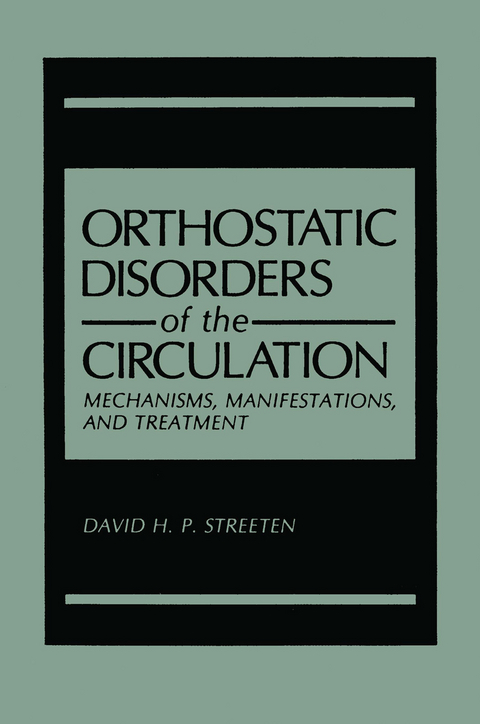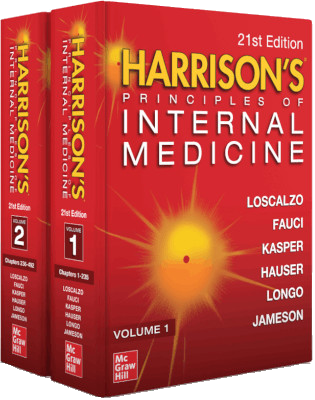
Orthostatic Disorders of the Circulation
Springer-Verlag New York Inc.
978-1-4684-8964-4 (ISBN)
1 Physiology of the Microcirculation.- 1.1. Control of the Peripheral Vasculature.- 1.2. Physiological Requirements Imposed by Orthostasis.- 1.3. Orthostatic Circulatory Adjustments: Neurohumoral Mechanisms.- 1.4. Disorders of the Peripheral Circulation.- 1.5. Orthostatic Disorders of the Circulation.- 1.6. Summary.- 2 Orthostatic Edema: Definition and Pathogenesis.- 2.1. Definition of Orthostatic Edema.- 2.2. General Mechanisms of Edema Formation.- 2.3. Pathogenesis of Orthostatic Edema.- 2.4. Summary.- 3 Orthostatic Edema: Clinical Features.- 3.1. Gender, Age, and Prevalence.- 3.2. Symptoms and Signs.- 3.3. Factors That Aggravate Orthostatic Edema.- 3.4. Laboratory Findings.- 3.5. Summary.- 4 Orthostatic Edema: Diagnosis.- 4.1. Exclusion of Known Types of Edema.- 4.2. Positive Diagnosis of Orthostatic Edema.- 4.3. Summary.- 5 Orthostatic Edema: Treatment and Prognosis.- 5.1. General Aspects.- 5.2. Control of Posture.- 5.3. Dietary and Fluid Restrictions.- 5.4. Conventional Diuretics.- 5.5. Treatment of Potassium Depletion.- 5.6. Elastic Garments and Stockings.- 5.7. Dopamine Agonists.- 5.8. Converting Enzyme Inhibitors: Captopril.- 5.9. Vasoconstrictors.- 5.10. Summary of Therapeutic Program.- 5.11. Summary.- 6 Orthostatic Disorders of Blood Pressure Control: Definitions and Classification.- 6.1. Technique of Blood Pressure Measurement in the Upright Posture.- 6.2. Orthostatic Blood Pressure and Heart Rate Changes: Normal Limits.- 6.3. Definable Disorders of Blood Pressure and Heart Rate Control.- 6.4. Classification of Orthostatic Disorders of Blood Pressure Control.- 6.5. Summary.- 7 Orthostatic Disorders of Blood Pressure Control: Pathocenesis.- 7.1. Orthostatic Hypotension.- 7.2. Orthostatic Hypertension and Other Types of Orthostatic Blood Pressure Disorders.- 7.3. Causes of Orthostatic Blood Pressure Disorders.- 7.4. Pathogenesis of Orthostatic Blood Pressure Disorders Associated with Intact Autonomic Function.- 7.5. Conclusions.- 7.6. Summary.- 8 Orthostatic Disorders of Blood Pressure Control: Clinical Features.- 8.1. Frequency of Main Symptoms.- 8.2. Intracranial Features.- 8.3. Other Clinical Features.- 8.4. Summary.- 9 Orthostatic Disorders of Blood Pressure Control: Prevalence and Diagnosis.- 9.1. Prevalence.- 9.2. Sex Incidence and Age of Onset.- 9.3. Hereditary Factor.- 9.4. Diagnosis of Orthostatic Blood Pressure Derangements.- 9.5. Summary.- 10 Orthostatic Disorders of Blood Pressure Control: Treatment and Prognosis.- 10.1. Treatment.- 10.2. Prognosis.- 10.3. Summary.- Appendix I Clinical and Laboratory Data Obtained in 169 Patients with Orthostatic and Nonorthostatic Edema.- Appendix II Clinical and Laboratory Data Obtained in 159 Patients with Orthostatic Blood Pressure Disorders.- References.
| Zusatzinfo | 115 Illustrations, black and white; 286 p. 115 illus. |
|---|---|
| Verlagsort | New York, NY |
| Sprache | englisch |
| Maße | 152 x 229 mm |
| Themenwelt | Medizin / Pharmazie ► Gesundheitswesen |
| Medizinische Fachgebiete ► Innere Medizin ► Diabetologie | |
| Medizinische Fachgebiete ► Innere Medizin ► Kardiologie / Angiologie | |
| ISBN-10 | 1-4684-8964-X / 146848964X |
| ISBN-13 | 978-1-4684-8964-4 / 9781468489644 |
| Zustand | Neuware |
| Haben Sie eine Frage zum Produkt? |
aus dem Bereich


